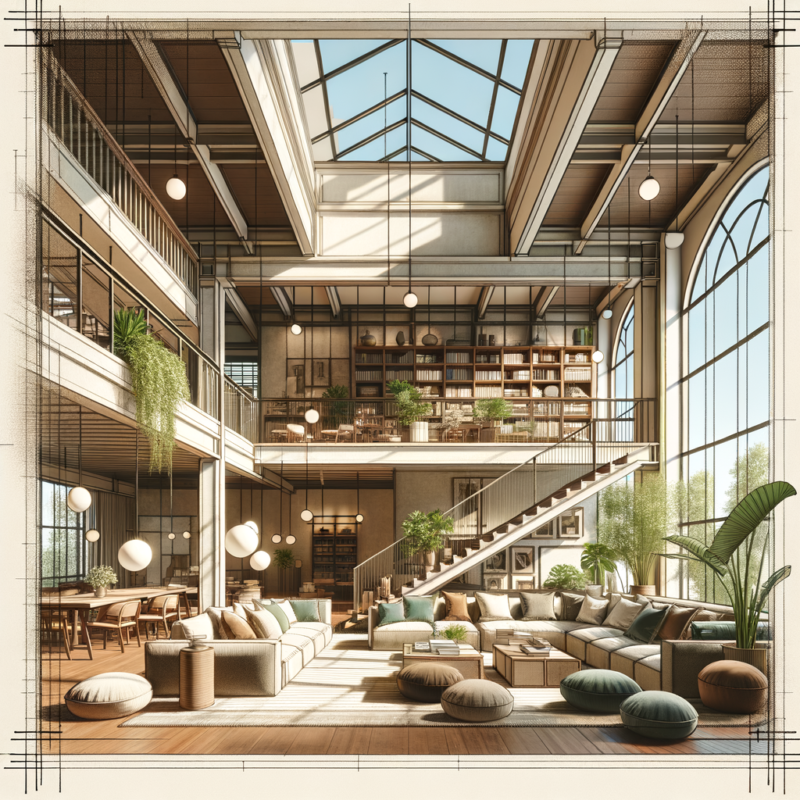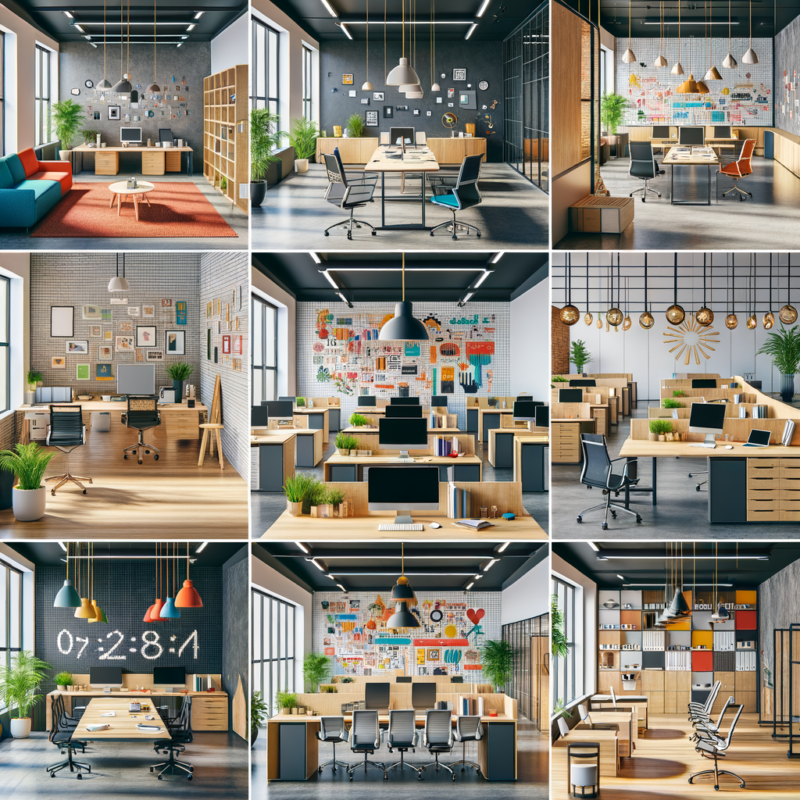In the quest for maximizing space utilization, businesses often encounter challenges, especially in environments where square footage comes at a premium. However, there exists a versatile solution that addresses this issue effectively: mezzanine floors.
Benefits of Mezzanine Floors
Increased Space Utilization
Mezzanine floors provide a practical means to optimize vertical space within a building without the need for expensive expansions or relocations. By effectively doubling the usable area, these platforms offer an innovative solution for businesses looking to accommodate growth without compromising efficiency.
Cost-Effective Solution
Compared to traditional methods of expanding floor space, such as constructing new buildings or leasing additional premises, mezzanine floors present a more cost-effective alternative. The upfront investment is significantly lower, making it an attractive option for businesses seeking to maximize their budgetary resources.
Flexibility in Design
One of the key advantages of mezzanine floors is their inherent flexibility in design. Whether it’s for storage, office space, or retail displays, these platforms can be customized to suit the specific needs and aesthetic preferences of the business. From layout configuration to material selection, the possibilities are virtually limitless.
Types of Mezzanine Floors
Mezzanine floors come in various types, each catering to different requirements and structural considerations.
Structural Mezzanine Floors
These are typically constructed using structural steel components, offering robust support for heavy loads. Ideal for industrial environments where durability and strength are paramount, structural mezzanine floors provide a reliable solution for enhancing storage capacity.
Rack Supported Mezzanine Floors
Utilizing existing racking systems as support structures, rack-supported mezzanine floors offer a space-efficient solution for warehouses and distribution centers. By capitalizing on vertical space above pallet racks, businesses can maximize storage capacity without the need for extensive modifications.
Freestanding Mezzanine Floors
As the name suggests, freestanding mezzanine floors are independent structures that do not rely on existing building supports for stability. This versatility makes them suitable for a wide range of applications, from retail mezzanine offices to recreational spaces in commercial settings.
Considerations Before Installing Mezzanine Floors
Before embarking on a mezzanine floor installation project, several factors need to be carefully considered to ensure optimal outcomes.
Building Regulations and Codes
Compliance with local building regulations and codes is essential to avoid potential legal complications and ensure the safety and structural integrity of the installation. Working with experienced professionals who are familiar with these requirements is crucial for a smooth and hassle-free process.
Structural Integrity
Assessing the structural capacity of the existing building is paramount to determine the feasibility of installing a mezzanine floor. Factors such as floor loading, column spacing, and ceiling height must be evaluated to ensure compatibility with the intended use of the space.
Purpose and Functionality
Clearly defining the purpose and functionality of the mezzanine floor is essential for effective design and layout planning. Whether it’s for storage, office space, or retail displays, understanding the specific requirements will guide decision-making throughout the project.
Designing Mezzanine Floors
Designing a mezzanine floor involves a systematic approach to ensure that it meets the functional needs of the business while adhering to safety standards and regulatory requirements.
Assessing Space Requirements
An initial assessment of space requirements is essential to determine the size and configuration of the mezzanine floor. Factors such as workflow patterns, equipment placement, and future growth projections should be taken into account to optimize usability and efficiency.
Customization Options
From flooring materials to railing designs, mezzanine floors offer a range of customization options to suit diverse aesthetic and functional preferences. Working closely with design professionals can help translate vision into reality, ensuring that the end result aligns with the business’s branding and operational needs.
Safety Features
Safety should always be a top priority when designing and installing mezzanine floors. Incorporating features such as handrails, gates, and non-slip surfaces is essential to minimize the risk of accidents and injuries. Additionally, providing adequate signage and training for personnel further enhances safety protocols.
Installation Process
The installation process of a mezzanine floor typically involves several stages, each requiring careful planning and execution to ensure quality outcomes.
Site Assessment
A thorough site assessment is conducted to evaluate the existing infrastructure and identify any potential challenges or limitations that may impact the installation process. This includes assessing access points, utilities, and structural considerations.
Fabrication and Assembly
Once the design specifications have been finalized, the fabrication of structural components commences. Precision engineering and quality craftsmanship are essential to ensure that the mezzanine floor meets the required standards for strength, durability, and safety. Once fabricated, the components are assembled according to the approved design plans.
Installation Timeline
The installation timeline may vary depending on factors such as the size and complexity of the project, as well as any site-specific challenges encountered during the process. However, working with experienced installers who adhere to strict timelines and quality standards can help minimize disruptions to ongoing operations and ensure timely completion.
Maintenance and Safety
Maintaining the integrity and safety of mezzanine floors requires ongoing attention and adherence to established maintenance protocols.
Regular Inspections
Regular inspections are essential to identify any signs of wear, damage, or structural issues that may compromise the safety and stability of the mezzanine floor. This includes checking for corrosion, loose fasteners, and any visible signs of stress or deformation.
Safety Equipment
Providing appropriate safety equipment, such as harnesses, lanyards, and personal protective gear, is essential for personnel working on or around mezzanine floors. Training employees on proper usage and safety protocols helps mitigate risks and ensure a safe working environment.
Load Capacity Management
Monitoring and managing load capacity is critical to prevent overloading and potential structural failures. Implementing weight restrictions, organizing storage layouts efficiently, and regularly assessing load distribution help maintain optimal performance and prolong the lifespan of the mezzanine floor.
Applications of Mezzanine Floors
Mezzanine floors find applications across various industries and sectors, offering versatile solutions for space optimization and functional enhancement.
Warehousing and Storage
In warehousing and distribution facilities, mezzanine floors provide valuable additional space for storing inventory, picking and packing operations, and order fulfillment. By maximizing vertical space, businesses can increase storage capacity without expanding their footprint.
Retail Spaces
In retail environments, mezzanine floors offer opportunities for creating dynamic and engaging shopping experiences. Whether it’s additional showroom space, customer seating areas, or product displays, these platforms help retailers make the most of their available square footage while enhancing the overall shopping experience.
Office Environments
In office environments, mezzanine floors can be utilized to create collaborative workspaces, private offices, or meeting rooms, allowing businesses to optimize space utilization and accommodate evolving organizational needs. By incorporating modern design elements and ergonomic features, these spaces contribute to employee productivity and satisfaction.
Case Studies
Examining real-world examples of successful mezzanine floor installations provides valuable insights into the practical applications and benefits of this versatile solution.
Conclusion
In conclusion, mezzanine floors offer a cost-effective and versatile solution for maximizing space utilization in various environments, from warehouses and retail stores to office spaces. By understanding the benefits, types, considerations, design principles, installation process, maintenance requirements, and applications of mezzanine floors, businesses can make informed decisions to enhance their operational efficiency and profitability.

